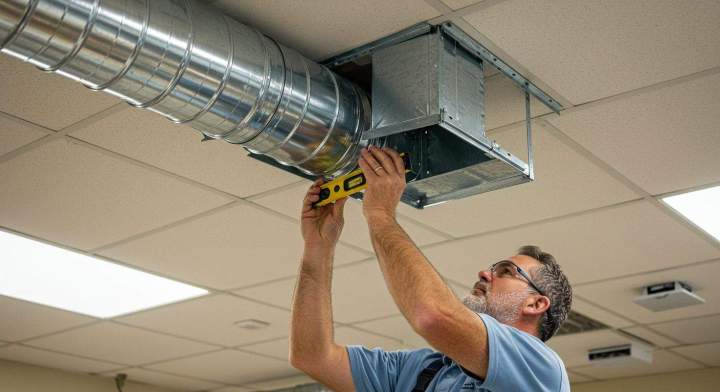Professional Ductwork Installation: Step-by-Step Process Explained
Ductwork Installation Admin / October 9, 2025

Understanding Ductwork and Its Importance
Ductwork consists of a network of tubes that transport heated or cooled air throughout a building. Properly designed and installed duct systems enhance energy efficiency and maintain comfortable indoor environments.
While DIY projects can be tempting for many homeowners, ductwork installation requires specialized knowledge and experience. Professional installers understand local building codes, safety regulations, and the complexities of HVAC systems. Their expertise ensures that the ductwork is not only functional but also efficient, reducing energy costs and enhancing air quality.
Step 1: Initial Assessment and Planning
Evaluating the Space
Before any installation begins, a professional will conduct a thorough assessment of the space. This involves measuring rooms, assessing existing ductwork, and determining the heating and cooling needs of the building.
Designing the Duct System
Once the assessment is complete, the installer will create a detailed plan. This plan includes the layout of ducts, the size and type of ducts to be used, and the locations of vents and returns. Proper design is crucial for ensuring that air circulates effectively throughout the space.
Step 2: Gathering Materials and Tools
Selecting the Right Materials
Quality materials are paramount in ductwork installation. Professionals typically use galvanized steel, aluminum, or flexible ducting, depending on the specific needs of the project. Each material has its advantages, such as durability or ease of installation.
Tools Required
A variety of tools are essential for ductwork installation, including:
- Sheet metal shears
- Duct knives
- Screwdrivers
- Drill and bits
- Measuring tape
- Level
Having the right tools on hand is essential for a smooth installation process.
Step 3: Installing the Ductwork
Setting Up the Framework
The installation process begins with the setup of the framework. This involves mounting brackets and supports that will hold the duct system in place. Proper support is necessary to prevent sagging and ensure long-term stability.
Installing Duct Sections
Once the framework is in place, the installer will begin connecting duct sections. This process requires precision to ensure airtight connections, preventing air leaks that can lead to energy loss.
Sealing and Insulating Ducts
After the ducts are connected, sealing them with mastic or specialized duct tape is vital. This step reduces air leakage and enhances the system's overall efficiency. Additionally, insulating the ducts—especially those that run through unconditioned spaces—helps maintain the temperature of the air traveling through the system.
Step 4: Connecting to HVAC Equipment
Attaching to the Furnace or Air Handler
The next phase involves connecting the ductwork to the HVAC equipment. This connection must be made securely to ensure efficient airflow. Professionals typically use flanges or transition pieces to facilitate these connections.
Testing the System
Once everything is connected, the installer will conduct airflow tests. This process ensures that the system is functioning correctly and that air is being distributed evenly throughout the building. Adjustments may be made at this stage to optimize performance.
Step 5: Final Inspection
Quality Control Checks
Before completing the installation, a thorough quality control check is performed. This includes examining all joints, seals, and connections for leaks.
Ensuring Compliance with Codes
Professionals also ensure that the installation adheres to local building codes and regulations. This step is crucial for both safety and efficiency.
Ductwork installation requires technical precision to ensure optimal airflow and ventilation. Each step, from sizing to commissioning, directly impacts system performance. Hire an experienced ductwork installer to ensure the job is done to code and industry standards.